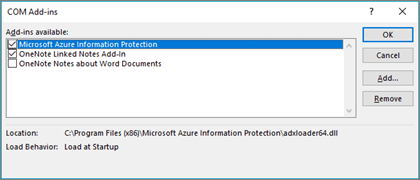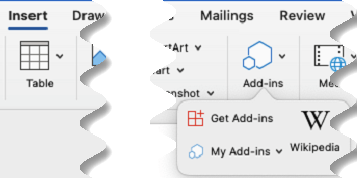

For example, this user installed the Translator for Outlook and Reply with eGift add-ins. The add-ins that you have installed automatically appear on your ribbon.
#MICROSOFT OFFICE FOR MAC ADD INS FREE#
For paid add-ins and free trials, select Get it to finish your purchase. When you find an add-in you want, review its privacy policy.įor free add-ins, use the toggle controls to turn them on or off. On the Add-Ins for Outlook page, browse for the add-in you want by selecting All and scrolling through the list, or search for an add-in by using the Search box. Note that the icon may look slightly different depending on your version of Outlook. In Outlook, click Home > Get Add-ins on the ribbon. Select an add-in to see more information about it on the right side of the page.

Turn on or turn off an add-in by checking or clearing its check box in the Turned on column.

Use the options on the toolbar to add more add-ins, uninstall an add-in, or refresh the page to see a list of the latest add-ins. Select Find more add-ins for Outlook at the Office Store to go to the Office Store. On the Manage add-ins page, you can do the following:
#MICROSOFT OFFICE FOR MAC ADD INS PASSWORD#
When you’re prompted to sign in, type the email address and password you use to sign in to Office programs. In Outlook, go to File > Manage Add-ins or Manage Apps. Note: If the Reading Pane ( View > Reading Pane) is set to Off, all add-ins will appear disabled. When you're in the main Outlook window (without a new message open), you can access your installed add-ins from the ribbon. When you're writing a new email message ( Home > New Email), you can access other installed add-ins from the Message ribbon. The add-ins that you have installed automatically appear in the gray add-in bar near the top of the message when there is data in the email that is related to the add-in.įor example, when you open an email message that has a street address, you'll see that the add-in's name, Bing Maps, is displayed in the add-in bar.Ĭhoose the add-in to access the data it offers. To get them, you’ll need Office 2013 or Office 2016 and Exchange 2013 or Exchange 2016, and your administrator needs to activate add-ins for Outlook. Note: If you don’t see the Manage add-ins (or Manage Apps) button, you won’t be able to get add-ins for Outlook.


 0 kommentar(er)
0 kommentar(er)
